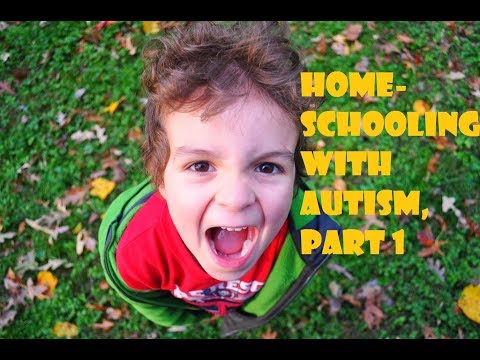A guest post from Trish Katkin. You can read the original here.
By now, you have probably heard of a GROWTH MINDSET. It is the understanding that one can achieve self-actualization and personal growth when their mind set is open to learning from new opportunities, and others’ around them. It is a willingness to observe the world around you and appreciate the gifts as much as the misgivings. A growth mindset is a way to view the world as a set of endless opportunities if you are only open to accepting them.
When a student has a growth mindset they are positive, encouraging and see challenges as small hills they are capable of conquering.
On the other hand, a student with a fixed mindset appears scared, unsure, and believes that they are incapable of glorious achievement.
Harnessing the power of a growth mindset is not easy. Students with disabilities are frequently the face of ridicule or isolation, which may result in feelings of inadequacy, incompetency or despair. Fostering a growth mindset in students that have been the victim of bullying may take a while, as you will have to overcome the barrier of a lack of self-esteem first.
HOWEVER…
It is not impossible!
A growth mindset is an achievable goal for any student! <<Tweet This!!!
Before I dive into how to foster a growth mindset, let’s look at what a growth vs. fixed mindset looks like
- Use Strengths
Plan activities and class lessons that will demonstrate a student’s competence. Use their natural abilities and talents to show their understanding or mastery of a topic.
Have an incredible artist in your class?
Let them present a competency using their artwork.
A musician?
See if they can write a song that can meets a standard being presented.
The best way to play to a classroom of various strengths is to offer a variety of opportunities for success. This means being flexible and letting students share their knowledge in a multi-faceted, or multi-sensory way that taps into their natural abilities.
- Acknowledge Weaknesses
Weaknesses…
We all have the, yet no one wants to talk about them. Acknowledging our weaknesses is just as important as utilizing your strengths.
Acknowledging one’s weaknesses does not mean telling a student what he or she cannot do well.
The term “acknowledge” is the key here. To acknowledge a student’s weakness is not to point it out, but to put a system of supports in place to close the weakness.
For example, if you had a student that struggled with tying his or her shoes, you wouldn’t point out the deficit, “Hey, I know you can’t tie your shoes, so come here…” Instead, putting systems of task analysis, imitation, and practice can help a student master shoe tying without embarrassment.
- Offer Opportunities for Success
A sure fire way to shut down a vulnerable student is to restrict their chances for success.
Mending self-esteem and fostering a growth mindset requires just the opposite. Set up chances and experiences where your students can display their competence and show off their successes.
REMEMBER: There is a success story in every day. It may not jump out at you, but don’t be afraid to look for it.
- Encourage Appropriate Risks
Taking risks is hard. But it can also be very rewarding. Encourage your students to take appropriate risks and try new things. They may even be surprised by what they find out about themselves.
- Failure as a Chance to Learn
Never view failure as a negative. Things will (and frequently do) go wrong.
It is what you do afterwards that is important. Persevere, don’t give up, refine, and try again.
It is always okay to make a mistake.
- Reinforce Growth
Sometimes we as teachers are quick to look at quizzes, tests, and standards to develop a snapshot about a student.
DON’T DO THIS!
A test score is a snapshot of that student, on that particular day, at the that specific time. It is not a well-rounded idea of what the student has learned, nor what they are capable of.
Instead, positively reinforce the growth that a student makes. Make baseline notes at the beginning of the year and reassess periodically in order to show students (and parents) just how much one has learned. Reinforcing one’s growth will increase a student’s self-esteem.
- Celebrate Achievements
Celebrate every student’s achievements and successes along the way. This will help with self-esteem, class morale, and will teach all of your students empathy and compassion for each other.
REMEMBER: Achievements come in all shapes and sizes. Don’t forget to celebrate all of the little achievements throughout the day.
It is important to show the students that everyone’s successes are valued and are wonderful. One way to bring the class together is to have a marble jar, sticker chart, or some other form of class reward system. This system could be used to help each student work on a different goal. While one may receive a marble when he or she uses a quiet mouth, another may receive a marble for working well with a peer. Filling the marble jar or sticker chart as a class and working towards a class reward is a fun way to keep the class engaged and the students encouraging each other.
Try out these 7 strategies for fostering a growth mindset and you are bound to get your class on the right track. It feels good to feel good. Encourage your class, be a role model, and stay positive. You students will appreciate it!
This guest post is by Trisha Katkin, a special education teacher in NH. She has her Master’s in Education and currently holds 3 teaching certificates in General Special Education, Learning Disabilities and Emotional/Behavioral Disabilities. She is the mother of 3 beautiful, and amazingly talented girls. She has been a guest speaker several times at the University of New Hampshire Institute on Disability in their Behavioral Workshops and at the Summer Behavioral Summit. She has been featured on Autism Talk, KerryMagro.com, The American Autism Association and GeekClubBooks. Her projects promoting autism awareness have also been featured on The Mighty. She is a crusader for students with autism and fights to spread awareness for teachers, parents, and advocates who need help. She writes a blog at TRISHAKATKIN.COM where her posts consist of actionable step-by-step advice and tips that can be implemented immediately.
Check her out on social media!
Twitter: https://twitter.com/TrishaKatkin
Pinterest: https://www.pinterest.com/TrishaKatkin
Facebook: https://www.facebook.com/TrishaKatkin
Facebook Group for Special Educators, Autism teachers Unite! https://www.facebook.com/groups/AutismTeachersUnite






